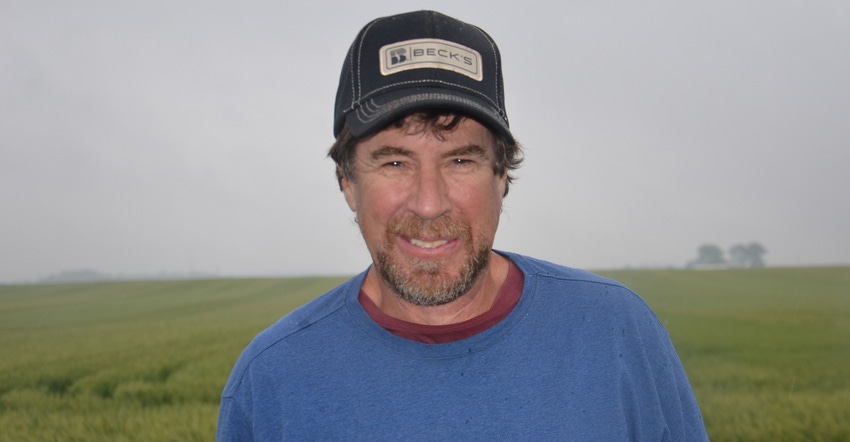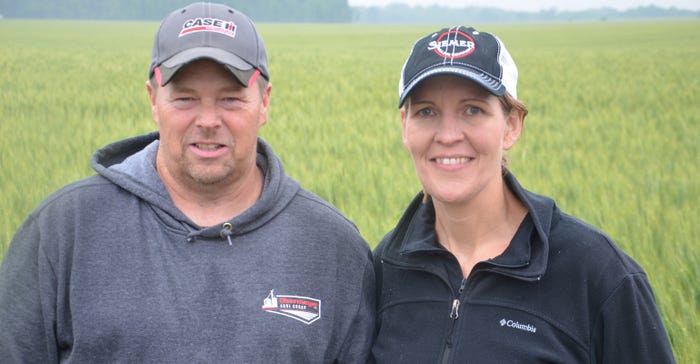
There was a time when Gary Kerr raised 50-bushel-per-acre wheat primarily for straw. If that was still the yield level today, Kerr, who farms near Mount Carmel in Franklin County, Ind., might not be raising wheat. Instead, his yield typically averages 80 to 100 bushels per acre. His goal is to raise double-crop soybeans after wheat, but it’s not just the chance to raise two crops that’s keeping wheat acres on his farm.
The two biggest changes since the old days, he says, are the ability to raise high-yield wheat and a local market, Siemer Milling Co., which opened a flour mill in nearby West Harrison, Ind., in 2015.
Related: Take virtual tour of Indiana flour mill
Wheat is no longer a “sow it and forget it” crop, Kerr says. “It takes a system to raise high-yield wheat successfully,” he notes. He works with a consultant who specializes in high-yield wheat management, Aaron Travis with Midwest Wheat Consultants, based in Converse, Ind.
“Our target date for drilling wheat is Oct. 1,” Kerr says. He follows soil test results and makes sure phosphorus and potassium levels are where they should be. He typically applies a herbicide and an insecticide in the fall, but little or no nitrogen. Two applications of nitrogen come in the spring.
“We have tram lines, because we also apply fungicides,” Kerr adds. “Wheat scab wasn’t as prevalent this year as in some other years, but there is a narrow window to apply fungicides to combat it.”
Typically, Kerr harvests wheat at 18% to 20% and dries it on the farm in a batch dryer. “The milling people tell us that results in better quality than letting it field dry,” he adds. “They want wheat to come to them at 13.5%.”
Dawn Schuman is the grain merchandiser for the West Harrison location of Siemer Milling. She buys wheat from about a 40-county area in southeast Indiana and southwest Ohio. Most of the flour they produce is primarily from soft red winter wheat, and it’s used to make breading for chicken nuggets and similar products, and for cakes, pretzels and cookies, but not for bread. She’s not concerned about which brand or variety a grower plants, but she is all about quality.
“We run a quick test called the ‘falling test’ on flour samples when a load arrives, and the higher the number, the better,” she says. “It measures the consistency of the flour. If it’s too low, we may not be able to accept the wheat.”
Back in wheat
Schuman’s husband, Mark, also farms in Franklin County. Until this year, he hadn’t raised wheat in 10 years.
“Raising 50-bushel wheat wasn’t profitable, and at the time we weren’t set up to dry wheat,” he says. “My wife talked to me about it, and once we could finally set up to dry it, I decided to raise wheat to sell to Siemer Milling. Part of the decision was going to high-yield wheat. I knew past yields wouldn’t cut it.”

Mark Schuman worked with a different consultant to set up his high-yield system — Chad Grote, a local consultant affiliated with Wheat Tech, with a home office in Kentucky. Based on Grote’s advice, Schuman says about six passes were made across the field to spray, including a pass this spring for wild garlic.
“We had 170 acres of high-yield wheat this year, and we’ll likely continue,” he concludes.
About the Author(s)
You May Also Like




